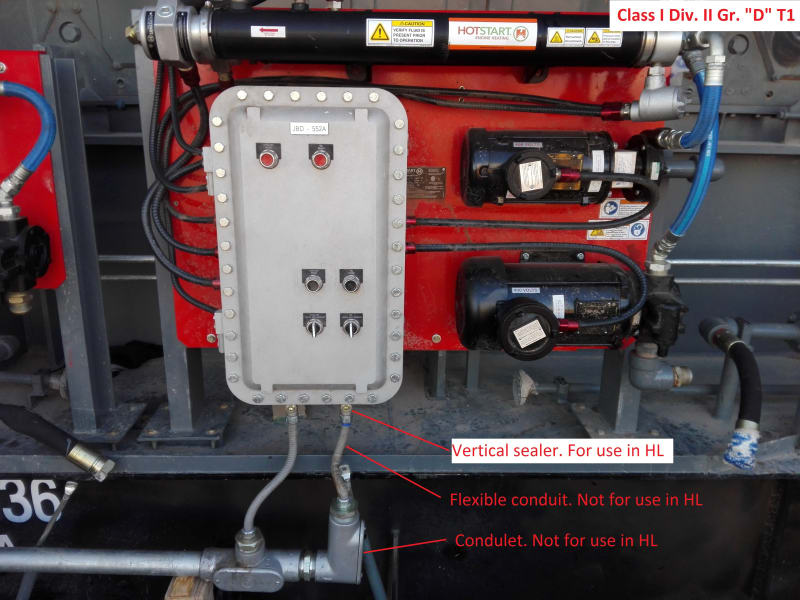Hello,
I would like your comments regarding the attached picture (Instrumentation cables wired on-skid of a gas compressor - Location classified as Class I Div. II Gr. 'D' T1)
Is it enough to only use a "sealer"? (At both ends) -- Cables used inside conduit are NOT armoured
I am not familiar with NEC wiring, we usually wire everything under IEC standard (Armoured cable wired through open conduits with fittings for hazzardous locations at both ends)
I really appreciate your help. Regards,

JBC
.......
"The more I read, the more I acquire, the more certain I am that I know nothing"
I would like your comments regarding the attached picture (Instrumentation cables wired on-skid of a gas compressor - Location classified as Class I Div. II Gr. 'D' T1)
Is it enough to only use a "sealer"? (At both ends) -- Cables used inside conduit are NOT armoured
I am not familiar with NEC wiring, we usually wire everything under IEC standard (Armoured cable wired through open conduits with fittings for hazzardous locations at both ends)
I really appreciate your help. Regards,

JBC
.......
"The more I read, the more I acquire, the more certain I am that I know nothing"
